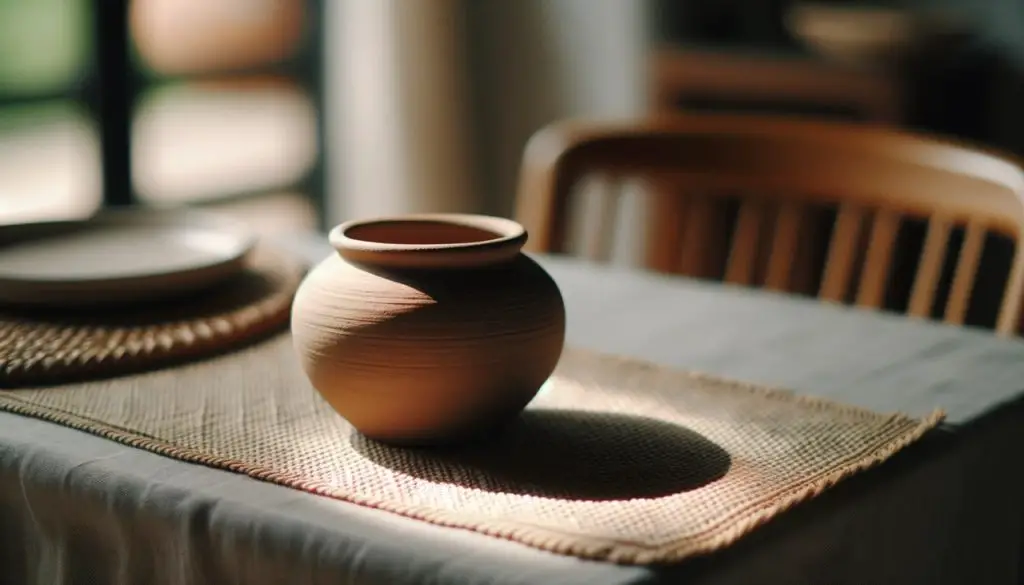If you’re looking to perfect the art of clay crafting, understanding how to oven dry clay is crucial. This guide is designed to eliminate any guesswork and provide you with a straightforward, step-by-step approach to successfully oven-dry your clay creations.

Table of Contents
Materials You’ll Need: How to Oven Dry Clay
Before diving into how to oven dry clay, gather the following materials:
- Clay (oven-safe)
- Temperature-safe dish or baking sheet
- Oven mitts
How to Oven Dry Clay Step by Step
Follow the steps below to oven dry clay…
Preparation
The first and most critical step in oven drying clay is the preparation phase. At this point, you’ve likely got a vision for your clay project. Now, it’s time to bring that vision to life. Start by shaping the clay into the form you desire. Use your hands, clay tools, or molds to achieve the perfect shape.
However, shaping alone is not enough; you must also eliminate any air bubbles and imperfections. Air bubbles can cause cracks during the drying process, ruining your creation.
To remove air bubbles, knead the clay thoroughly, applying consistent pressure throughout. If you spot any surface imperfections, now is the time to smooth them out. Use a small amount of water and your fingers or a clay-smoothing tool to perfect the surface.
Oven Settings
Oven drying your clay is not a one-size-fits-all process, which is why it’s essential to read the manufacturer’s guidelines for your specific type of clay. These guidelines will provide the ideal temperature range and timing for drying your clay in the oven. Most clay types require an oven temperature that ranges from 200-275°F (93-135°C).
First, preheat your oven to the recommended temperature. It’s essential to wait until the oven reaches this temperature before proceeding, as putting the clay in too early can result in uneven drying.
Some ovens have a built-in timer or a light that turns off to indicate they’ve reached the set temperature. If your oven doesn’t have these features, you can use an oven thermometer to confirm that it’s ready.
Read more oven drying topics here – How to Oven Dry Stuff: Your Ultimate Guide to Drying Various Items in the Oven
Drying Process
After you’ve prepared your clay and preheated your oven to the manufacturer-recommended temperature, it’s time to move on to the drying process. Begin by selecting a temperature-safe dish or baking sheet.
The choice of dish matters because you’ll want something that can withstand the oven’s heat without warping or cracking. A ceramic dish or a metal baking sheet usually works well for this purpose.
Before placing your clay object on the dish or sheet, consider lining it with parchment paper. This will prevent the clay from sticking and make it easier to remove later. Once the dish or sheet is prepared, gently place your clay object on it, ensuring it sits flat to promote even drying. Now you’re ready to put it in the oven.
Open the oven door and carefully place the dish or baking sheet on one of the middle racks to ensure even heat distribution. Close the oven door gently to avoid disturbing the air inside, which could affect the temperature.
The time required for drying will depend on the type of clay you’re using and its thickness. Always follow the manufacturer’s guidelines for drying time, and if possible, check periodically to see how the drying process is progressing. However, refrain from opening the oven door too frequently as it lets out heat and could result in uneven drying.
Cooling and Finishing
Once the clay has been in the oven for the recommended time, the next step is the cooling and finishing process. First, turn off the oven but do not immediately take out the clay. Allowing the clay to cool inside the oven for at least 10 minutes will help prevent it from cracking due to sudden temperature changes.
After the initial cooling period, open the oven door and carefully remove the dish or baking sheet using oven mitts to protect your hands. Place it on a heat-resistant surface and allow it to cool down to room temperature. This could take anywhere from 30 minutes to an hour depending on the clay’s thickness and the room’s ambient temperature.
Once your clay object has completely cooled, you’re ready to move on to the finishing touches. You may wish to paint, glaze, or seal your creation at this point. If you’re painting it, make sure to use paints that are compatible with the type of clay you used. Similarly, if you’re sealing or glazing the clay, read the product guidelines to ensure it’s the right fit for your project.
Conclusion: How to Oven Dry Clay
Understanding how to oven dry clay is key for anyone serious about clay crafting. By following these step-by-step guidelines, you’ll successfully dry your clay and be well on your way to becoming an expert crafter.